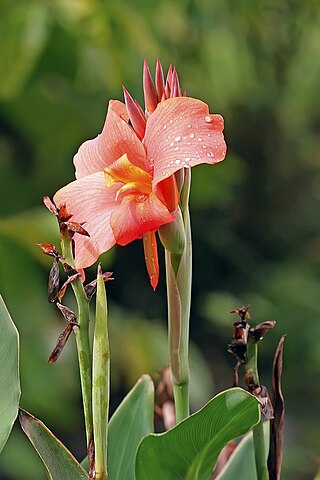
Canna or canna lily is the only genus of flowering plants in the family Cannaceae, consisting of 10 species. All of the genus's species are native to the American tropics and naturalized in Europe, India and Africa in the 1860s. Although they grow native to the tropics, most cultivars have been developed in temperate climates and are easy to grow in most countries of the world, as long as they receive at least 6–8 hours average sunlight during the summer, and are moved to a warm location for the winter. See the Canna cultivar gallery for photographs of Canna cultivars.
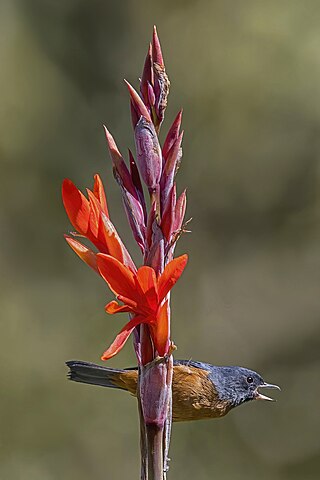
Canna indica, commonly known as Indian shot, African arrowroot, edible canna, purple arrowroot, Sierra Leone arrowroot, is a plant species in the family Cannaceae. It is native to much of South America, Central America, the West Indies, and Mexico. It is also naturalized in the southeastern United States, and much of Europe, sub-Saharan Africa, Southeast Asia, and Oceania.
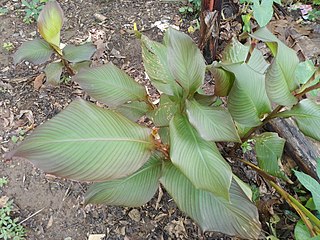
Canna discolor also known as Achira in Colombia is a species of the Canna genus, belonging to the family Cannaceae, found naturally in the range from South Mexico to Colombia, widely introduced elsewhere. It is a perennial growing to 3m. It is hardy to zone 10 and is frost tender. In the north latitudes it is in flower from August to October, and the seeds ripen in October. The flowers are hermaphrodite.

Canna glauca is a species of the Canna genus, a member of the family Cannaceae. It is commonly known as water canna or Louisiana canna. It is native to the wetlands of tropical America and was introduced to England in 1730. It is also reportedly naturalized in Sri Lanka, Thailand, Vietnam, Java and the Philippines.

Canna flaccida is a species of the Canna genus, a member of the family Cannaceae. The species is indigenous to the wetlands of the south-central and south-eastern United States from Texas to South Carolina. It is also reportedly naturalized in India, the Philippines, Mexico, Panama, Cuba, the Dominican Republic, Peru and southern Brazil.
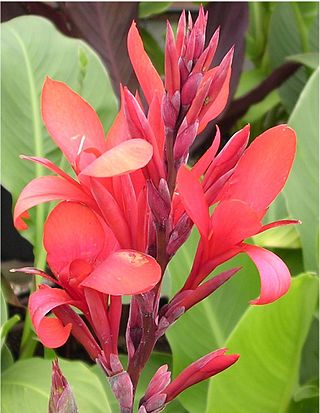
Canna coccinea is a species of the Canna genus, belonging to the family Cannaceae. A native of northern Argentina, it was introduced in England from South America in 1731.
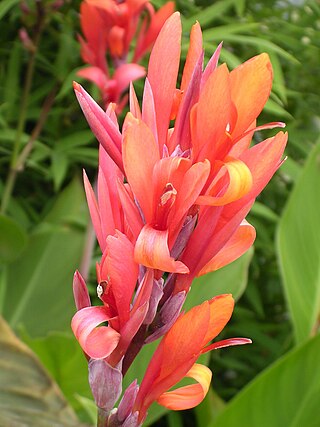
Canna compacta is a species of the Canna genus, belonging to the family Cannaceae, distributed between the south of Brazil and northern Argentina. Introduced to England from South America in 1820. Not to be confused with C. compacta Bouché, which is a synonym of C. indica L.
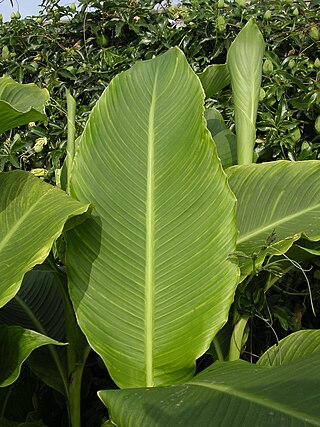
Canna tuerckheimii is a species of the Canna genus, belonging to the family Cannaceae. Its specific epithet tuerckheimii commemorates Hans von Türckheim, a 19th-century German plant collector.
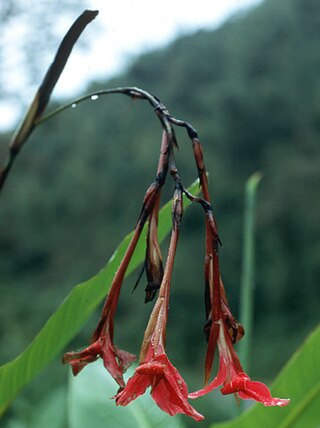
Canna iridiflora is a species of herb in the family Cannaceae.
Canna bangii is a species of herb in the family Cannaceae. It is native to Peru and Bolivia.
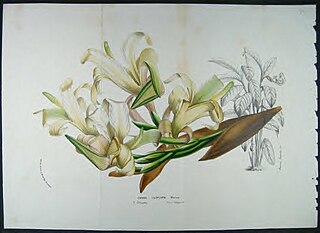
Canna liliiflora is a species of herb in the family Cannaceae. It is native of Peru and Bolivia.

Canna patens is a species of herb in the Cannaceae family.
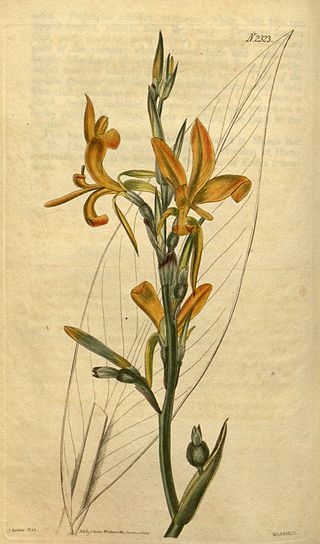
Canna pedunculata is a species of the Canna genus, belonging to the family Cannaceae. Native of south-east Brazil at low altitudes. Johnson's Dictionary of 1856 reports that it first entered England in 1820, pedunculata meaning 'long-flower-stalked'.

Canna jaegeriana is a species of herb in the family Cannaceae.

Canna paniculata is a species of the Canna genus, belonging to the family Cannaceae. Native of southern Mexico, Costa Rica, and tropical South America, except for the Amazon Basin, at 200-2,000m (650-6,500 ft).
Canna 'Musaefolia' is a cultivar in to the Foliage Group of Cannas. The cultivar was first described in the first work devoted to Canna, Le Canna, authored by M. Chaté in 1867 with Monsieur Théodore Année. The Musaefolia members of the Foliage Group consist of a specimen that was accepted as a native species of Peru by the experts of the time and at least 7 hybrids and cultivars carrying that parentage. The original "species" was unique because it was without rhizomes, and required to be kept constantly growing. No such species is known to exist in this age, and leading authorities treat C. musaefolia as a synonym of C. paniculata.

Nobuyuki Tanaka is an economic botanist at the Tokyo Metropolitan University, the Makino Botanical Garden in Kōchi Prefecture, Japan.














